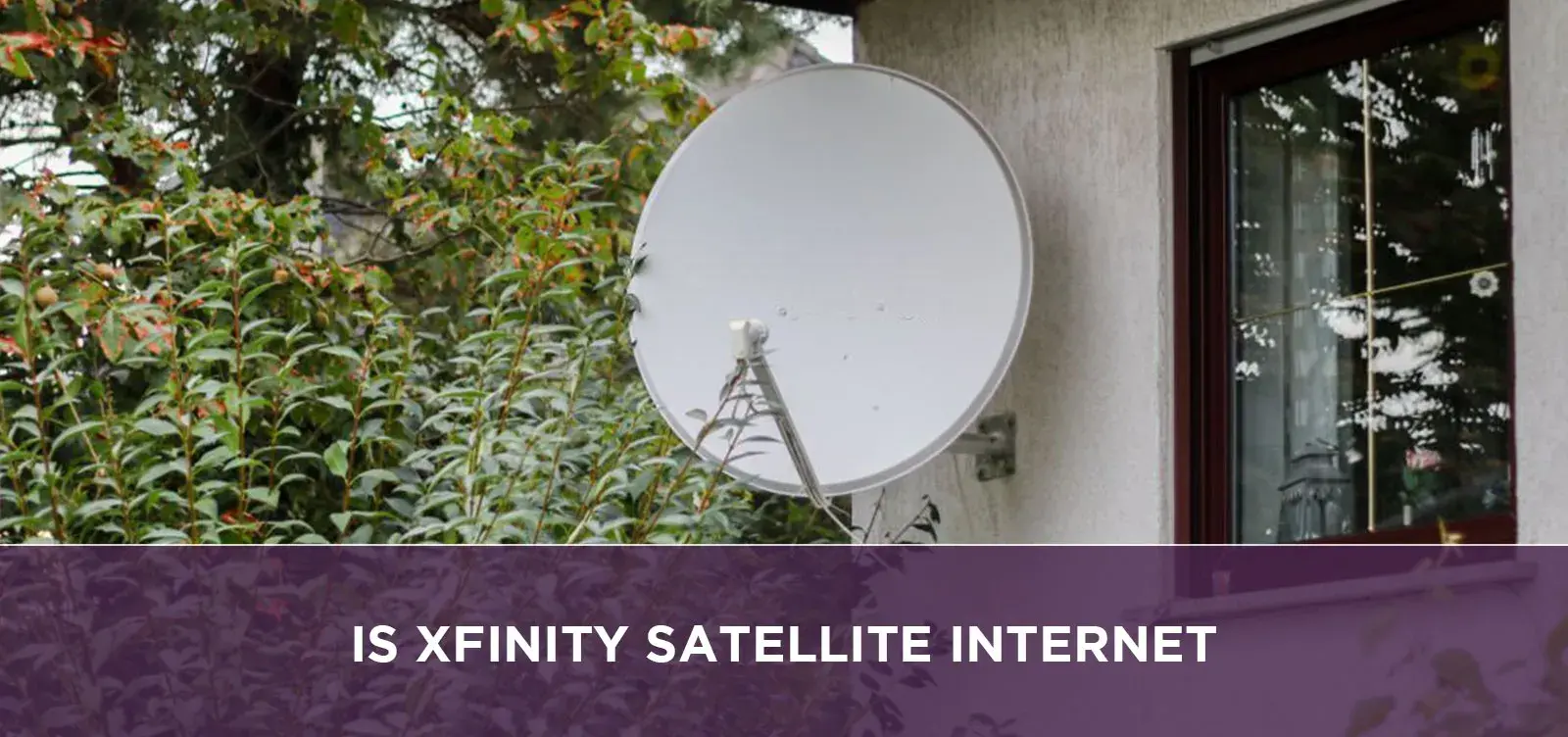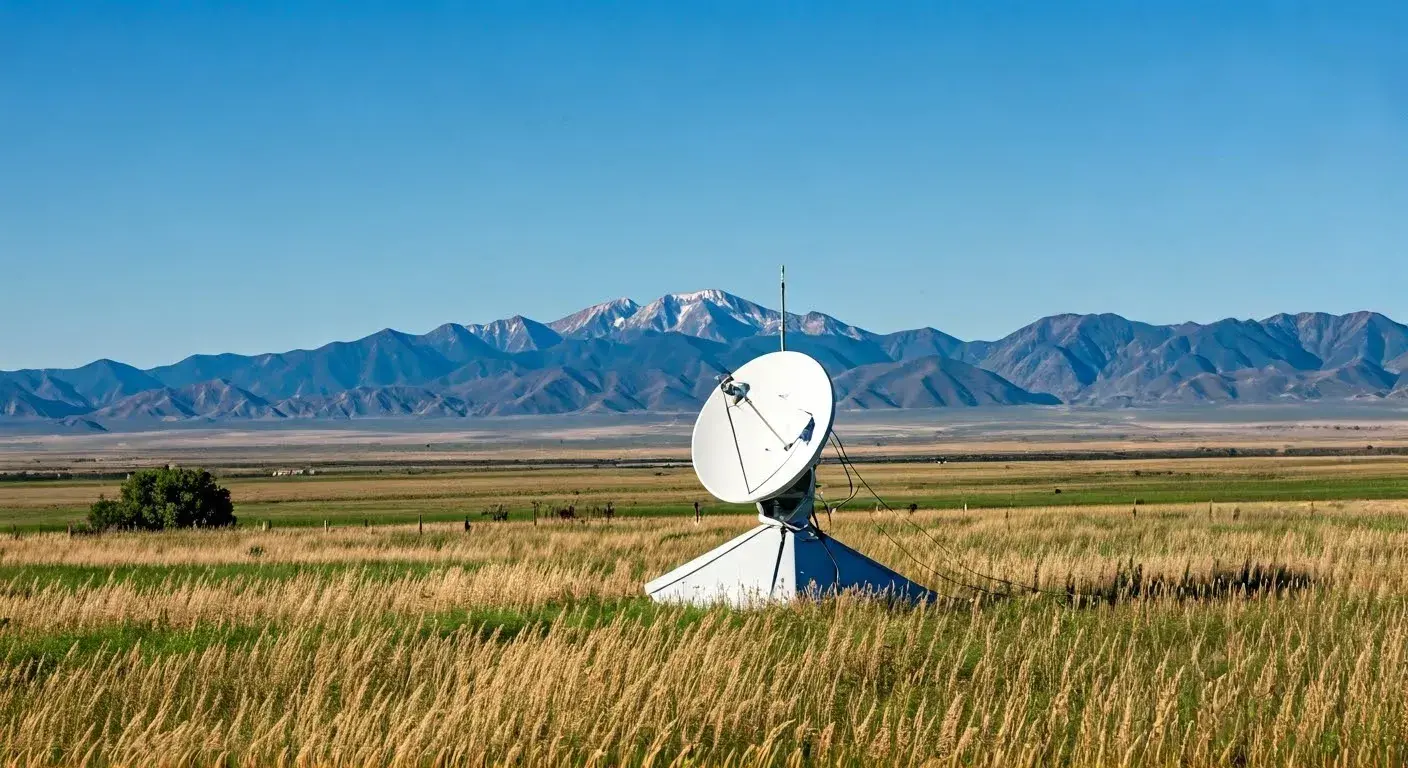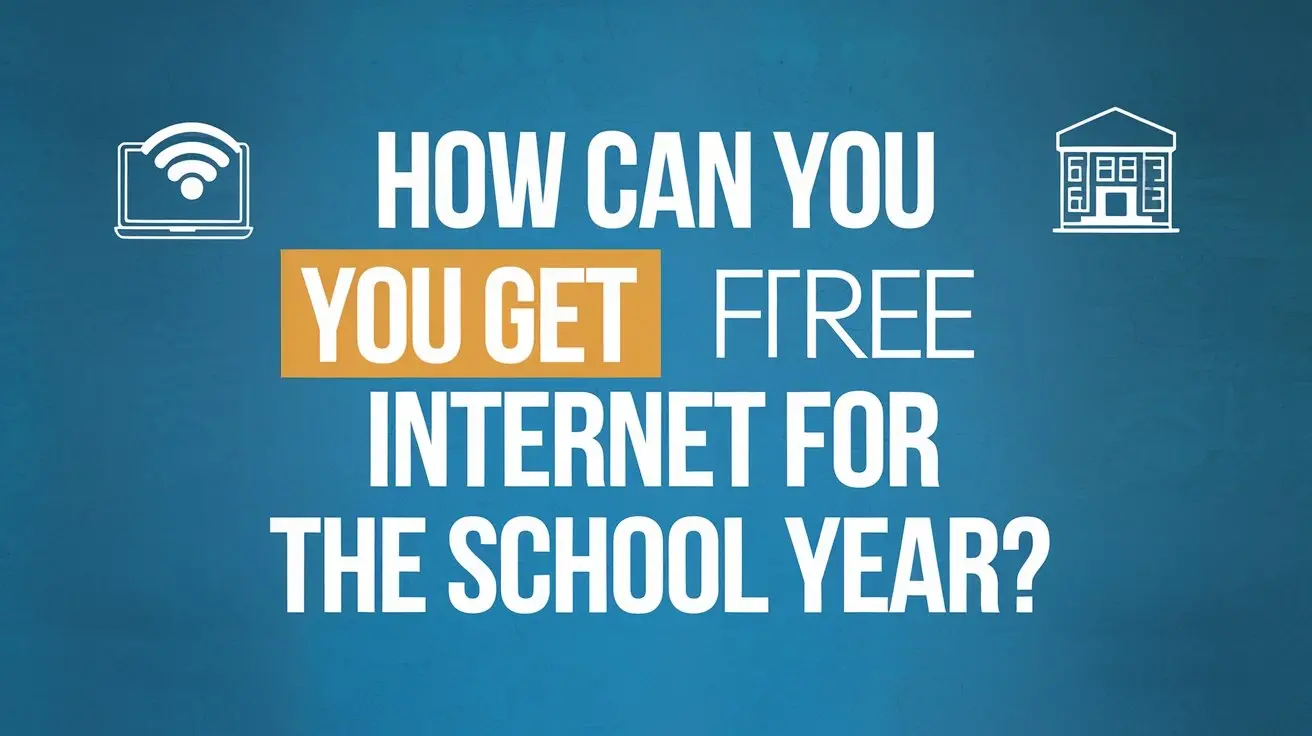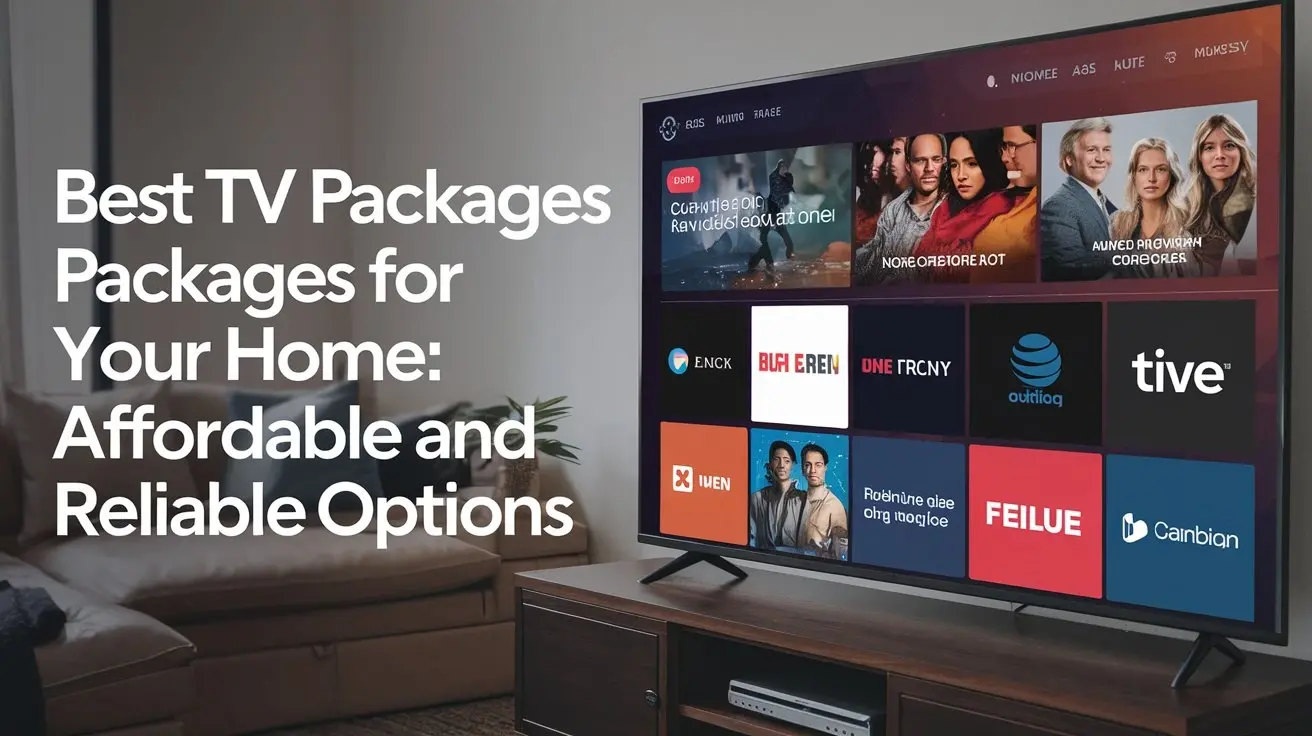-
Posted on: 09 Oct 2023

-
Introduction
In an era where reliable internet is essential for work, education, and entertainment, choosing the right internet service provider (ISP) is critical. Xfinity, a brand of Comcast, is one of the largest ISPs in the United States, known for its high-speed cable and fiber internet services. However, a common question arises: Is Xfinity satellite internet? This 2500-word guide, as of August 5, 2025, answers that question definitively, explores Xfinity’s offerings, compares them to satellite internet, and provides actionable insights for consumers. Whether you’re in a bustling city or a remote rural area, this article will help you understand your connectivity options and make an informed decision.
Understanding Xfinity’s Internet Services
What is Xfinity?
Xfinity is the consumer-facing brand of Comcast, a telecommunications giant founded in the 1960s as American Cable Systems. It provides a range of services, including high-speed internet, cable TV, digital phone, home security, and mobile services. Xfinity’s internet services are particularly popular, capturing over 40% of the U.S. broadband market, according to industry sources. Unlike some providers, Xfinity focuses on delivering internet through physical infrastructure, specifically hybrid fiber-coaxial (HFC) and fiber-optic networks.
How Xfinity Internet Works
Xfinity’s internet is delivered through:
-
Hybrid Fiber-Coaxial (HFC): Combines fiber-optic cables for long-distance data transmission with coaxial cables for the final connection to homes. This setup offers high speeds (up to 1,200 Mbps in many areas) and low latency (5-50 ms), ideal for streaming, gaming, and remote work.
-
Fiber-to-the-Home (FTTH): In select areas, Xfinity provides full fiber connections, offering symmetrical speeds up to 6 Gbps, as noted in recent Comcast announcements.
These wired technologies ensure reliable, high-performance internet but require extensive infrastructure, limiting availability in rural areas.
Xfinity’s Role in Connectivity
Xfinity’s services extend beyond internet to include:
-
Cable TV: Offering hundreds of channels, including premium options like HBO and sports packages like MLS Season Pass.
-
Xfinity Mobile: A mobile service with 5G data and satellite connectivity for emergency messaging on devices like the Samsung Galaxy S25 and Google Pixel 9.
-
Xfinity Flex: A 4K streaming device for broadband-only customers, integrating apps like Netflix and Peacock.
However, Xfinity’s home internet services are strictly cable and fiber-based, not satellite.
Is Xfinity Satellite Internet?
The evidence clearly indicates that Xfinity does not offer satellite internet for home use. Xfinity’s internet services rely on cable and fiber infrastructure, as confirmed by multiple sources, including CNET and AmericanTV.com. While Xfinity Mobile incorporates satellite connectivity for emergency messaging through a partnership with Skylo, this is limited to mobile services and does not extend to home internet. For home internet, Xfinity uses HFC and fiber networks, which provide faster speeds and lower latency compared to satellite internet.
Why Xfinity Doesn’t Offer Satellite Internet
Xfinity’s focus on cable and fiber is driven by:
-
Performance Advantages: Cable and fiber offer higher speeds (up to 6 Gbps) and lower latency (5-50 ms) than satellite internet (20-900 ms).
-
Infrastructure Investment: Comcast has invested heavily in its HFC and fiber networks, covering urban and suburban areas where demand is high.
-
Market Positioning: Xfinity targets areas with existing infrastructure, where cable and fiber are more cost-effective and reliable than satellite.
However, Xfinity’s coverage is limited, with over 90% of the U.S. lacking access due to the high cost of building infrastructure in rural areas, as noted by AmericanTV.com. This is where satellite internet becomes critical.
Understanding Satellite Internet
How Satellite Internet Works
Satellite internet delivers connectivity via signals transmitted between a satellite dish at your home and orbiting satellites, which connect to a ground station linked to the internet. There are two main types:
-
Geostationary (GEO) Satellites: Orbit at 22,000 miles, used by providers like Viasat and HughesNet. They offer wide coverage but high latency (600-900 ms).
-
Low Earth Orbit (LEO) Satellites: Orbit closer to Earth (e.g., Starlink’s 7,000+ satellites), providing lower latency (~20-40 ms) and faster speeds.
Key Features of Satellite Internet
-
Availability: Nearly universal, requiring only a clear view of the sky.
-
Speeds: Range from 25-200 Mbps, with Starlink offering up to 200 Mbps.
-
Latency: Higher than cable/fiber, impacting real-time applications.
-
Weather Sensitivity: Susceptible to disruptions (rain fade) during heavy rain or snow.
-
Data Caps: Many plans have limits (10-50 GB), with throttling after exceedance.
Satellite internet is vital for rural areas where cable and fiber are unavailable, bridging the digital divide for millions.
Comparing Xfinity and Satellite Internet
To determine the best option for your needs, let’s compare Xfinity’s cable/fiber internet with satellite internet across key factors:
1. Speed
-
Xfinity: Offers speeds from 75 Mbps to 6 Gbps, with gigabit plans widely available. This supports 4K streaming, gaming, and multi-device households.
-
Satellite: Traditional providers like Viasat and HughesNet offer 25-100 Mbps, while Starlink reaches up to 200 Mbps. Actual speeds may drop to 5-50 Mbps during peak times or bad weather.
Winner: Xfinity, for significantly higher speeds in areas with infrastructure.
2. Latency
-
Xfinity: Low latency (5-50 ms) ensures smooth performance for gaming, video calls, and VoIP.
-
Satellite: GEO satellites have high latency (600-900 ms), while LEO satellites like Starlink reduce this to 20-40 ms, still higher than Xfinity.
Winner: Xfinity, for lower latency critical for real-time applications.
3. Reliability
-
Xfinity: Wired connections are unaffected by weather, though outages can occur due to cable damage or network issues.
-
Satellite: Susceptible to rain fade and obstructions like trees, reducing reliability in adverse conditions.
Winner: Xfinity, for consistent performance.
4. Availability
-
Xfinity: Limited to areas with cable/fiber infrastructure, covering urban and suburban regions but not most rural areas.
-
Satellite: Available nearly everywhere with a clear sky view, ideal for remote locations.
Winner: Satellite, for universal coverage.
5. Cost
-
Xfinity: Plans start at $20-$30/month for basic speeds, up to $100+ for gigabit plans. Equipment fees (e.g., $15/month for xFi Gateway) and installation costs may apply.
-
Satellite: Plans start at $50-$100/month (e.g., HughesNet at $39.99, Starlink at $120). Equipment costs ($100-$599) and installation ($0-$200) add to expenses.
Winner: Xfinity, for lower monthly costs in available areas.
6. Data Caps
-
Xfinity: Most plans offer unlimited data, though some regions have caps (e.g., 1.2 TB), with overage fees or unlimited add-ons.
-
Satellite: Often capped (10-50 GB for HughesNet), with throttling to 1-2 Mbps after limits. Viasat offers unlimited plans with potential throttling.
Winner: Xfinity, for more unlimited data options.
Comparison Table
Factor
Xfinity (Cable/Fiber)
Satellite Internet
Winner
Speed
75 Mbps-6 Gbps
25-200 Mbps (5-50 Mbps actual)
Xfinity
Latency
5-50 ms
20-900 ms (GEO: 600-900 ms, LEO: 20-40 ms)
Xfinity
Reliability
Weather-resistant, stable
Affected by weather, obstructions
Xfinity
Availability
Limited to infrastructure areas
Near-universal with clear sky view
Satellite
Cost
$20-$100/month, $15 equipment
$50-$100/month, $100-$599 equipment
Xfinity
Data Caps
Mostly unlimited, some 1.2 TB caps
10-50 GB, throttling after
Xfinity
Why Choose Xfinity Over Satellite Internet?
If Xfinity is available in your area, it’s often the better choice due to:
-
Superior Performance: Speeds up to 6 Gbps and low latency (5-50 ms) support demanding tasks like 4K streaming and gaming.
-
Reliability: Wired connections avoid weather-related disruptions, ensuring consistent service.
-
Cost-Effectiveness: Lower monthly fees and fewer equipment costs compared to satellite.
-
Unlimited Data: Most plans offer unlimited data, ideal for heavy users.
-
Advanced Features: Xfinity’s xFi Advanced Security protects against cyber threats, and xFi Pods extend WiFi coverage.
However, in rural areas without Xfinity coverage, satellite internet is often the only viable option.
Satellite Internet Alternatives
For those in areas without Xfinity, consider these satellite providers:
-
Starlink: Offers speeds up to 200 Mbps and latency of 20-40 ms, with a $120/month plan and $599 equipment cost. Ideal for rural users needing high performance.
-
Viasat: Provides speeds up to 100 Mbps with unlimited data plans, starting at $50/month. Widely available but with higher latency (600-900 ms).
-
HughesNet: Offers speeds up to 50 Mbps with data caps (10-50 GB), starting at $39.99/month. Budget-friendly but limited by throttling.
Checking Xfinity Availability
To determine if Xfinity is available:
-
Visit the Website: Go to www.xfinity.com/planbuilder and enter your address to check availability and plans.
-
Call Customer Service: Contact 1-800-XFINITY (1-800-934-6489) for personalized assistance.
-
Use Third-Party Tools: Websites like BroadbandNow provide coverage maps for Xfinity and other ISPs.
Future Trends
As of August 2025, Xfinity continues to expand its fiber network, offering multi-gigabit speeds in select areas. Satellite internet is evolving with LEO providers like Starlink, which are closing the gap with cable/fiber in terms of speed and latency. Comcast’s partnership with Skylo for mobile satellite services suggests potential future exploration of satellite technology, but for now, Xfinity remains focused on cable and fiber for home internet.
FAQs
1. What is Xfinity, and what type of internet does it provide?
Xfinity, a Comcast brand, provides cable and fiber internet through hybrid fiber-coaxial (HFC) and fiber-to-the-home (FTTH) networks, offering speeds up to 6 Gbps.
2. Is Xfinity internet the same as satellite internet?
No, Xfinity uses cable and fiber technologies, not satellites. Satellite internet relies on orbiting satellites and is offered by providers like Starlink, Viasat, and HughesNet.
3. What are the differences between Xfinity and satellite internet?
Xfinity offers faster speeds (up to 6 Gbps), lower latency (5-50 ms), and greater reliability but is limited to areas with infrastructure. Satellite internet is available nearly everywhere but has slower speeds (25-200 Mbps), higher latency (20-900 ms), and weather sensitivity.
4. Can I get satellite internet from Xfinity?
No, Xfinity does not offer satellite internet for home use. Its internet services are cable and fiber-based. Xfinity Mobile uses satellite for emergency messaging only.
5. What are alternatives to Xfinity for satellite internet?
Alternatives include Starlink (up to 200 Mbps, $120/month), Viasat (up to 100 Mbps, $50-$100/month), and HughesNet (up to 50 Mbps, $39.99-$100/month). Check availability at their respective websites.
6. How do I check if Xfinity is available in my area?
Visit www.xfinity.com/planbuilder or call 1-800-934-6489 to check availability by entering your address.
7. Is Xfinity better than satellite internet?
If available, Xfinity is generally better due to faster speeds, lower latency, and reliability. Satellite is better for rural areas without Xfinity coverage.
Conclusion
Xfinity is not a satellite internet provider; it offers high-speed cable and fiber internet services that excel in performance, reliability, and cost-effectiveness in urban and suburban areas. For rural users, satellite internet from providers like Starlink, Viasat, or HughesNet is often the only option. By checking availability and comparing features, you can choose the best internet solution for your needs. Visit www.xfinity.com or call 1-800-934-6489 to explore Xfinity’s plans, or check satellite providers for rural connectivity.
-





